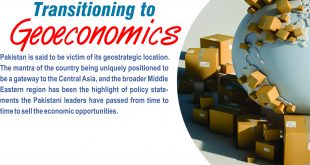Excessive military presence in public spaces, a rigid approach adopted by the ruling power in India and, most importantly, the grave human rights violations in the aftermath of the killing of Burhan Muzaffar Wani have increased home-grown militancy and radicalization among the Kashmiri population. Educated Kahmiri youths, who don’t even know how to use arms, are standing up for a cause and are giving a tough time to the highly-equipped Indian troops. Although, the situation exhibits that the current situation in Kashmir is similar to an armed struggle, it can never be compared to the insurgency of the 90s. The popular local support, the seed sown by Burhan Wani, and the unrest after his martyrdom have re-kindled the flame of independence in Kashmiris.
There are numerous United Nations Security Council (UNSC) resolutions stipulating that the final status of the state of Jammu and Kashmir will be determined in accordance with the wishes of the people of the valley. For instance, the UN called, in 1948, for a plebiscite allowing Kashmiris to determine their own fate, but it has never been held. The unending indifference and apathy of Indian state toward the legitimate demand of the Kashmiri people has culminated into mass public protests that are giving many sleepless nights to country’s political leadership. In the past, we have seen largely non-violent protests erupting throughout the Indian-occupied Kashmir nearly every summer since 2008. The basic aim of these protests has been to defy the Indian state and stir the world conscience help the Kashmiris get their right to self-determination. However, the year 2016 was different as people in all ten districts of Kashmir rose up, and as the uprising has continued into 2017, areas long considered dormant have become hotbeds of street protests.
The response from the Indian armed forces has been “the world’s first mass blinding,” earning widespread condemnation from across the world. In the months after Wani’s death on 8th July, Indian troops killed more than ninety people and injured 17,000, including children, many of them partially or completely blinded by the “irregularly shaped” metal pellets police and armed forces shot at unarmed protesters. But all the atrocities have failed to douse the flame of independence in the hearts of the Kashmiris.
To defeat the purpose of UN resolutions as well as of the Kashmiris’ liberation struggle, and because India has failed to crush the Kashmir freedom movement despite all its oppression and brutalities, it has decided to change its policy. Moreover amidst growing warnings by Indian as well as pro-India Kashmiri leaders that India is fast losing Kashmir, the oppressor state has resorted to different tactics. The policy shift seems to be tilted toward a more sinister plan under which a sea change in Kashmir’s demography is being planned.
Changing the demographic composition of the state of Jammu and Kashmir is a key tactic to reduce the Muslim majority there. This is what Shimon Peres, a former foreign minister of Israel, suggested to India during his visit on May 18, 1993. He said, “India should not be afraid or hesitate to populate Kashmir with people from all over India. Only a demographic change in Kashmir can help India to claim it. The idea of a Muslim-majority state living peacefully with a Hindu-majority community is idiotic and this is nothing but an anathema.
The first demographic change in Kashmir was made during August to November in 1947 when the Muslims of Jammu were massacred under a premeditated plan devised jointly by the then Dogra ruler of J&K, fanatic Hindu groups, and leaders of the Indian National Congress. There are no official figures, however, Horace Alexander, in an article published in ‘The Spectator’ on January 16, 1948, put the number at 200,000. In addition, Ian Stephens claims that half a million people were killed and another 200,000 went missing. Due to this massacre and large-scale displacement of Muslims, the community went from a majority of 61% to a minority of 30%.
The demography of Jammu was once again changed after the enactment of the Agrarian Reforms Act, 1976. The Act gave ownership rights to tillers of the land. Thousands of non-Kashmiris were shown as tillers after the tampering of records and they were given ownership status.
Another intrigue can be noticed by the fact that during the years 2001–2011, the number of Hindus has grown considerably in both Leh and Kargil districts of Ladakh region. In Ladakh as a whole, the proportion of Hindus has risen from 6.2% in 2001 to 12.1% in 2011. Such massive growth, 100%, in the population of Hindus in Ladakh in a period of ten years is unimaginable.
Now, the BJP, under the leadership of Narendra Modi, has intensified its plans to change the demographic composition of J&K and convert the Muslim majority into a minority. In its manifesto and official statements, the BJP has openly announced that the special status to Jammu and Kashmir mandated by Articles 370 and 35A of the Indian constitution besides Article 6 of Indian-Occupied Kashmir constitution would be done away with.
In 2014, the Parliamentary Standing Committee on Home Affairs in India recommended that West Pakistani Refugees (non-Muslims) living in the Jammu region should be given permanent resident certificates and voting rights in the state elections in Jammu and Kashmir.
These refugees who had migrated from Pakistan to India in 1947 and had settled in Jammu region are not permanent residents as defined in Article 6 of the Jammu and Kashmir Constitution. Rather, their settlement in Occupied Kashmir is unconstitutional as per Article 35A of the Indian constitution. The number of these non-Kashmiri Hindus described as refugees is said to be 600,000 while others say it is 1.2 million.
India has already started giving domicile certificates to these refugees and there is a clear direction of Indian Home Minister Rajnath Singh to the occupation authorities that necessary amendments in the State’s constitution should be made so that these refugees get not only permanent State Subject Certificates but also create 8 more assembly constituencies for Jammu region.
The question is why these refugees were pushed to Jammu in 1947 and not to any other part of India. The ensuing events made it clear that it was aimed at changing the demography of the territory. It is noteworthy that the Muslim population in Jammu district today is merely 5% compared to 39% in 1947.
Another relevant fact is that in 1947, Kashmiri Muslims were in hundreds of thousands. Rashtriya Swayamsevak Sangh (RSS), a Hindu fundamentalist party of India, has already arranged through fraudulent means State Subject Certificates for thousands of Biharis, Punjabis and people from other states of India to reside in Jammu. In the aftermath of Operation Blue Star against the Sikhs in Punjab in June 1984, Hindus were allowed to settle in Jammu; they were also granted citizenship rights.
Granting citizenship rights to these refugees would undoubtedly change the demography of Kashmir. Jammu and Kashmir is a disputed territory. While successive Indian governments despite parroting the line that it is its “integral part” may be forced by circumstances to hold a plebiscite one day. The vote of these refugees will naturally tilt the result in India’s favour.
To change the demography of Jammu and Kashmir, other plans are also underway especially in the Kashmir Valley, where Muslims constitute more than 97% of the population. These include separate colonies for non-Kashmiri retired Indian Army officers and composite townships for Kashmiri Hindus. On the pretext of these Israeli type settlements India intends to settle non-Kashmiris in Indian-Occupied Kashmir.
Under the industrial policy announced for the period 2016–2026, an outsider can get land on lease in occupied Kashmir for a period of 40 years. This can then be extended to a maximum of 90 years. This is a replica of the business establishments of the East India Company prior to its occupation of the Indian subcontinent. In its latest judgement, the Indian Supreme Court has legalized seizure of the Kashmiris’ properties and their transfer to non-state subjects, all of whom are expected to be non-Muslims.
In its resolution of March 30, 1951, the UN has settled the matter. It implies that no constituent or legislative assembly, law or any enactment can make any changes that would affect the results of the plebiscite. Therefore all acts or steps taken by the Indian Government to change the demography of the internationally recognized territory are a clear violation of UN resolutions.
 Jahangir's World Times First Comprehensive Magazine for students/teachers of competitive exams and general readers as well.
Jahangir's World Times First Comprehensive Magazine for students/teachers of competitive exams and general readers as well.



